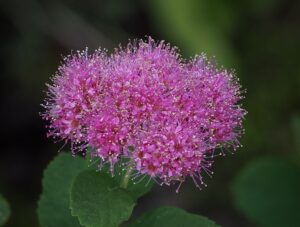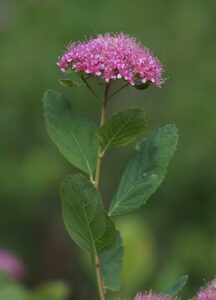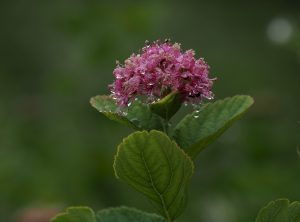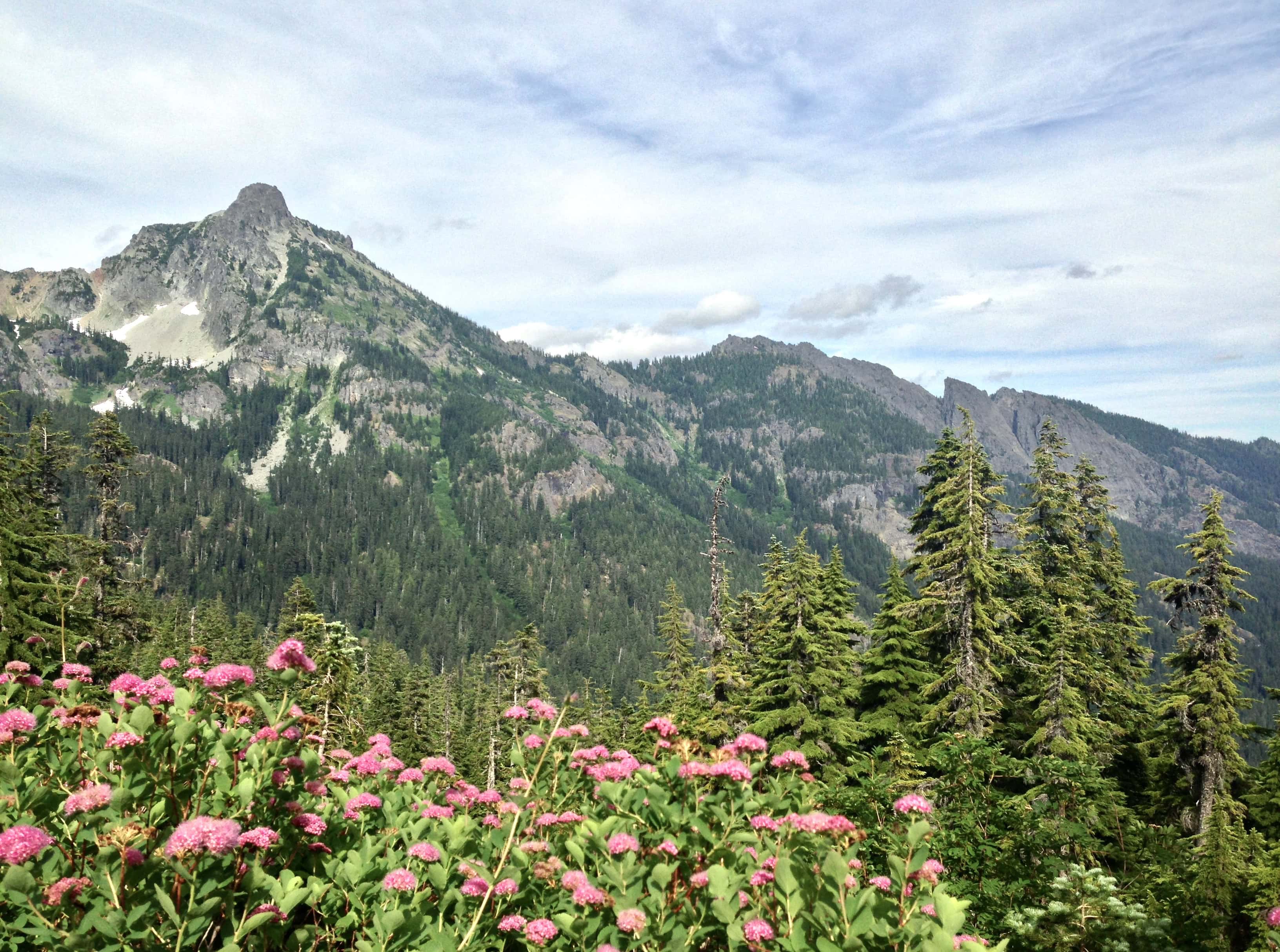 Subalpine spiraea (Spiraea splendens) cheers the sunny summer slopes, meadows, and lake sides with drifts of candy-colored, clove-scented blooms. Densely packed clusters of flowers atop each stem result in its binomial synonym, S. densiflora. The multitude of pistils and stamens bristling beyond its petals lend the flower heads a soft, fuzzy appearance and likely render it impossible for visiting bees and butterflies to avoid their service as pollinators. Its tough, woody stems form neat, knee-high shrubs. In autumn, the deciduous, slightly bluish foliage turns golden, flecked with contrasting hues as the chlorophyll fades.
Subalpine spiraea (Spiraea splendens) cheers the sunny summer slopes, meadows, and lake sides with drifts of candy-colored, clove-scented blooms. Densely packed clusters of flowers atop each stem result in its binomial synonym, S. densiflora. The multitude of pistils and stamens bristling beyond its petals lend the flower heads a soft, fuzzy appearance and likely render it impossible for visiting bees and butterflies to avoid their service as pollinators. Its tough, woody stems form neat, knee-high shrubs. In autumn, the deciduous, slightly bluish foliage turns golden, flecked with contrasting hues as the chlorophyll fades.
 Subalpine spiraea’s distinguishing features are its relatively flat umbels1An umbel is a flower cluster with all branches originating at the same point, usually resulting in a rounded or domed form. of deep pink blooms, broadly oval, almost egg-shaped leaves that are toothed along the edges nearest the tip, and height not exceeding 3.00 feet/1.00 meter. In Western Washington, it shares habitat with two similar cousins, Douglas’s spiraea (or, confusingly, rose — but not rosy — spiraea) (S. douglasii), which has much more elongated bloom clusters and leaves and can grow to twice as high, and pyramid spiraea (Spiraea x pyramidata), which has looser, white to pale pink blooms somewhat intermediate in form between subalpine and Douglas’s spiraea.
Subalpine spiraea’s distinguishing features are its relatively flat umbels1An umbel is a flower cluster with all branches originating at the same point, usually resulting in a rounded or domed form. of deep pink blooms, broadly oval, almost egg-shaped leaves that are toothed along the edges nearest the tip, and height not exceeding 3.00 feet/1.00 meter. In Western Washington, it shares habitat with two similar cousins, Douglas’s spiraea (or, confusingly, rose — but not rosy — spiraea) (S. douglasii), which has much more elongated bloom clusters and leaves and can grow to twice as high, and pyramid spiraea (Spiraea x pyramidata), which has looser, white to pale pink blooms somewhat intermediate in form between subalpine and Douglas’s spiraea.
 Subalpine spiraea ranges throughout North American’s Olympic, Cascade, Sierra Nevada, and northern Rocky mountains. In Western Washington, it is particularly common on the west slopes of the Cascades. As suggested by its common name, look for subalpine spiraea at mid- to high elevation in moist meadows and open forest generally below the treeline, as in the photo below:
Subalpine spiraea ranges throughout North American’s Olympic, Cascade, Sierra Nevada, and northern Rocky mountains. In Western Washington, it is particularly common on the west slopes of the Cascades. As suggested by its common name, look for subalpine spiraea at mid- to high elevation in moist meadows and open forest generally below the treeline, as in the photo below:
© 2023 Anthony Colburn. Images may not be used or reproduced in any form without express written consent.
